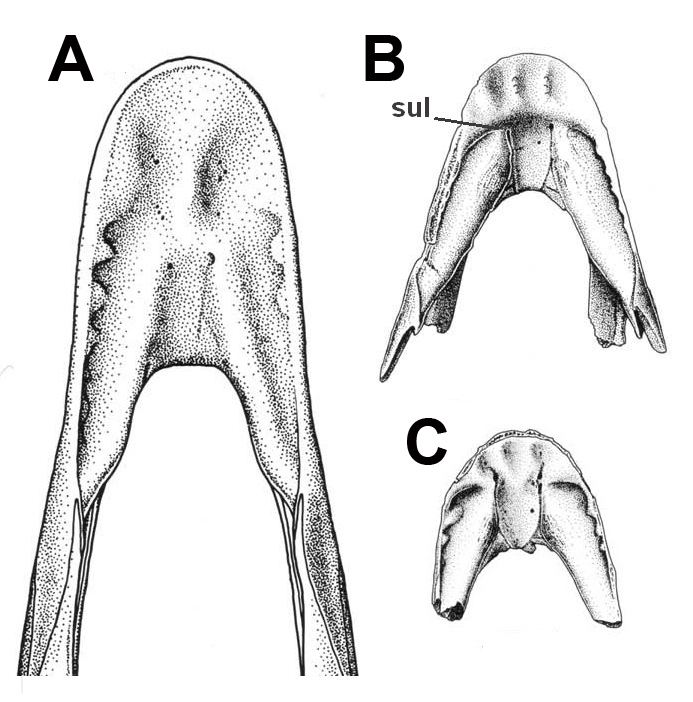Clade Dinosauria Phylum Chordata | Class Reptilia Subfamily †Caenagnathinae Rank Genus | |
 | ||
Similar Elmisaurus, Chirostenotes, Caenagnathasia, Microvenator, Leptorhynchos | ||
For the mammal-like reptile, see Cynognathus.
Caenagnathus ('recent jaw') is a genus of caenagnathid oviraptorosaurian dinosaur from the late Cretaceous (Campanian; ~75 million years ago). It is known from partial remains including lower jaws, a tail vertebra, hand bones, and hind limbs, all found in the Dinosaur Park Formation of Alberta, Canada. Caenagnathus weighted about a maximum of 96 kg (212 lb).
ClassificationEdit
This dinosaur has a confusing history. In 1936, a set of jaws were found, and later given the name Caenagnathus, meaning 'recent jaw'; they were first thought to be those of a bird. In 1988, a specimen from storage since 1923 was discovered and studied. This fossil were used to link the discoveries of several fragmentary oviraptorosaur species into a single dinosaur, which was assigned to the genus Chirostenotes, originally named for a pair of hands that were long considered to come from the same animal as Caenagnathus. Since the first name applied to any of these remains was Chirostenotes, this was the only name recognized as valid for many years. However, further study and new discoveries of more complete caenagnathid skeletons cast doubt on the idea that all of these fossils belonged to the same species. Some studies even suggested that while Chirostenotes was an advanced oviraptorosaurian and possibly an oviraptorid, Caenagnathus was thought to potentially have been a more primitive animal.
The status and relationships of Caenagnathus to other caenagnathid oviraptorosaurians began to be resolved with the discovery of more complete specimens in 2014 and 2015. The description of Anzu wyliei in 2014 represented the first nearly complete caenagnathid, and helped to clarify the differences between the more fragmentary specimens. Phylogenetic analyses found Caenagnathus collinsi to be more closely related to Anzu than to Chirostenotes. A second species which had previously been referred to Caenagnathus, "Caenagnathus" sternbergi, was found to be sister taxon to the grouping of Anzu and Caenagnathus in one 2014 analysis. In 2015, new fossil remains were found to belong to Caenagnathus collinsi. These appeared to be intermediate in size and anatomy between the smaller Chirostenotes and the larger Anzu, lending support to their hypothesized relationships. These bones can be distinguished from Chirostenotes and contemporary Leptorhynchos by features of the limbs, specifically the hand and metatarsals.
